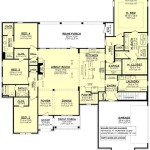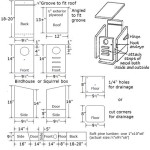Building plans are the detailed instructions and drawings necessary for constructing a house. They provide important information about the structure, layout, and materials used in the construction process. Having access to the original building plans for your house can be invaluable for home improvement projects, repairs, or expansions.
Locating building plans can be a straightforward task, depending on the age and location of your home. In this article, we will explore the various methods you can use to find building plans for your house, including contacting local authorities, searching online databases, and consulting with architects or contractors.
Transition Paragraph:
Let’s dive into the specific steps you can take to locate the building plans for your house. By following the methods outlined below, you can gain access to this crucial information and ensure that your home improvement or construction projects are executed smoothly and efficiently.
To effectively locate the building plans for your house, consider the following key points:
- Contact local building department
- Check with previous homeowners
- Search online databases
- Consult with architects or contractors
- Examine your home’s features
- Review property records
- Look for blueprints or sketches
- Check with utility companies
- Consult with a home inspector
By exploring these avenues, you increase your chances of obtaining the building plans necessary for your home improvement or construction projects.
Contact local building department
One of the most effective ways to find building plans for your house is to contact your local building department. These departments are typically responsible for issuing building permits and maintaining records of construction projects within their jurisdiction.
- Check online records: Many building departments now offer online databases where you can search for building permits and access digital copies of building plans. Simply enter your address or the property identification number to see if the plans are available.
- Visit the office in person: If you are unable to find the plans online, you can visit the building department in person and request to view the records. You may need to provide proof of ownership or a valid reason for needing the plans.
- Request copies: Once you have located the building plans, you can request copies for a small fee. The department may provide physical copies or digital files, depending on their policies.
- Be prepared for delays: Depending on the age of your home and the availability of records, it may take some time to obtain the building plans. Be patient and persistent in your efforts.
Contacting your local building department is a reliable method for finding building plans, as they are the official authority responsible for overseeing construction projects in your area.
Check with previous homeowners
If you are unable to obtain building plans from the local building department or online databases, reaching out to previous homeowners can be a valuable alternative. Former owners may have retained copies of the plans or know where they can be found.
Locate previous owners: You can find contact information for previous homeowners through various methods, such as searching online property records, using social media platforms, or reaching out to local real estate agents. Explain your need for the building plans and request their assistance in locating them.
Be polite and respectful: When contacting previous homeowners, be polite and respectful of their time. Explain your situation and why you need the building plans. Offer to compensate them for any expenses incurred in providing the plans.
Be persistent: It may take some effort to track down previous homeowners, especially if they have moved out of state or are difficult to locate. Be persistent in your efforts and don’t give up easily.
Checking with previous homeowners can be a successful strategy for finding building plans, as they may have retained copies or know where they can be obtained. By following these steps and maintaining a polite and persistent approach, you can increase your chances of acquiring the necessary plans.
Search online databases
Searching online databases is another effective method for finding building plans for your house. Several websites and platforms offer access to digital copies of building plans and permit records.
Check city or county websites: Many cities and counties have online databases where you can search for building permits and access digital copies of building plans. Simply enter your address or the property identification number to see if the plans are available online.
Utilize third-party websites: There are also various third-party websites that aggregate building permit and plan data from multiple sources. These websites allow you to search for plans by address, property owner, or permit number.
Use subscription services: Some websites offer subscription services that provide access to comprehensive databases of building plans and permit records. These services are typically geared towards professionals in the construction industry but may also be available to homeowners.
Searching online databases can be a convenient and efficient way to find building plans for your house. By exploring the various websites and platforms available, you can increase your chances of locating the necessary plans.
Consult with architects or contractors
If you are unable to locate building plans through the methods mentioned above, consulting with architects or contractors can be a helpful option. These professionals may have access to plans or be able to assist you in obtaining them.
- Contact local architects: Architects are trained professionals who design and oversee the construction of buildings. They may have copies of building plans for projects they have worked on in the past, including your house.
- Inquire with contractors: Contractors are responsible for the physical construction of buildings. They may have access to building plans as part of their project records or be able to provide you with information on how to obtain them.
- Seek referrals: Ask friends, family, or neighbors for recommendations of reputable architects or contractors in your area. Personal referrals can increase your chances of finding someone who can assist you.
- Be prepared to pay a fee: Architects and contractors may charge a fee for their time and services in locating or providing copies of building plans. Be sure to inquire about any fees upfront to avoid unexpected expenses.
Consulting with architects or contractors can be a valuable step in finding building plans for your house, especially if other methods have been unsuccessful. By reaching out to these professionals, you can leverage their expertise and connections to obtain the necessary plans.
Examine your home’s features
Examining your home’s features can provide valuable clues about its construction and help you narrow down your search for building plans. By carefully observing the architectural details, materials used, and overall design of your house, you may be able to determine its age, style, and potential sources for the original plans.
Architectural details: Pay attention to the architectural details of your home, such as the shape of the roof, the style of the windows and doors, and the presence of any decorative elements. These features can provide insights into the architectural style of your house and the era in which it was built. Matching these details with similar homes in your area can help you identify potential sources for the building plans.
Materials used: The materials used in the construction of your home can also offer clues about its age and style. For example, older homes may feature wood framing, while newer homes may use steel or concrete. The type of siding, roofing, and windows can also provide valuable information. By researching the materials commonly used during different construction periods, you can gain a better understanding of when your house was built.
Overall design: The overall design of your home can provide further insights into its history and potential sources for building plans. Consider the layout of the rooms, the flow of traffic, and the presence of any unique or distinctive features. Matching these elements with similar homes in your area or consulting with architects or historians can help you narrow down your search.
By carefully examining your home’s features and conducting thorough research, you can gather valuable information that can lead you to the original building plans for your house.
Review property records
Property records are a valuable source of information about your house, including potential leads to building plans. These records are typically maintained by the county or city where your property is located and may contain valuable details about the history of your home’s construction.
- Property deeds: Property deeds are legal documents that transfer ownership of a property from one party to another. They often include a description of the property, including the location, dimensions, and any improvements made to the land or buildings. Building plans may be referenced or attached to the deed as part of the property description.
- Building permits: Building permits are required for most construction projects, including new construction, additions, and major renovations. The building permit records may contain copies of the building plans submitted for approval. Contact the local building department to inquire about accessing these records.
- Title search: A title search is a comprehensive examination of the legal history of a property. It can reveal any liens, easements, or other encumbrances that may affect the property. Building plans may be included as part of the title search documents, especially if they were used to secure a construction loan.
- Tax records: Property tax records may include information about the age, size, and value of your house. While building plans are not typically included in tax records, they may provide clues about the potential location of the plans, such as the name of the original builder or architect.
By reviewing property records, you can gather valuable information about the history of your home’s construction and identify potential sources for obtaining the original building plans. It is important to note that the availability and accessibility of property records vary depending on the jurisdiction and the age of your home.
Look for blueprints or sketches
Blueprints or sketches are detailed technical drawings that provide a visual representation of a building’s design and construction. They are typically created by architects or engineers and serve as a guide for the construction process. If you are unable to locate building plans through the previously mentioned methods, searching for blueprints or sketches can be a valuable alternative.
Check attics and basements: Blueprints or sketches are often stored in attics or basements, as these areas provide ample space for storing large documents. Look for rolled-up or folded papers tucked away in boxes or cabinets. Even if the plans are not labeled, examining the drawings and comparing them to your home’s layout can help you determine if they are relevant.
Inquire with family members or previous owners: If you have family members or know previous owners of your house, reach out to them and inquire if they have any blueprints or sketches. They may have kept these documents for their own records or may know where they can be found.
Search online marketplaces: Websites like eBay and Craigslist sometimes have blueprints or sketches for sale. While it’s less common to find plans for specific houses, you may be able to find similar plans for houses built during the same era and in the same architectural style.
Finding blueprints or sketches can be a valuable way to obtain visual representations of your home’s design and construction. By exploring various storage locations, reaching out to previous owners, and searching online marketplaces, you can increase your chances of locating these important documents.
Check with utility companies
Utility companies, such as electric, gas, and water providers, may have records of building plans for your house. When new construction or major renovations are completed, utility companies often require updated plans to ensure that their services are connected properly and safely to the house.
- Contact local utility companies: Reach out to the utility companies that provide services to your house. Explain your need for the building plans and inquire if they have any records on file.
- Provide property information: When contacting the utility companies, have your property address, account number, and a brief description of your request ready. This information will help them locate the relevant records.
- Request copies: If the utility companies have the building plans on file, request copies for your records. They may charge a small fee for providing the copies.
- Follow up: If the utility companies do not have the plans immediately available, follow up with them periodically to check on the status of your request.
Checking with utility companies can be a valuable step in finding building plans for your house, especially if other methods have been unsuccessful. By contacting the utility companies and providing them with the necessary information, you can increase your chances of obtaining the plans you need.
Consult with a home inspector
Hiring a qualified home inspector is another option for finding building plans for your house. Home inspectors are trained to thoroughly examine all aspects of a property, including its structural components, systems, and overall condition. They may have access to building plans or be able to identify clues that lead to their discovery.
Schedule a home inspection: Contact a reputable home inspector in your area and schedule a thorough inspection of your house. Explain your need for the building plans and inquire if they have any knowledge of their whereabouts.
Review the inspection report: After the inspection, carefully review the inspector’s report. The report may include references to building plans or provide insights into the construction history of your house. If the inspector does not have the plans, they may be able to recommend other sources to check.
Follow up with the inspector: If the home inspector has any leads on where to find the building plans, follow up with them promptly. They may be able to provide additional information or assist you in contacting the appropriate parties.
Consulting with a home inspector can be a valuable step in finding building plans for your house, especially if other methods have been unsuccessful. By hiring a qualified inspector, you can benefit from their expertise and gain insights into the construction history of your home.


:max_bytes(150000):strip_icc()/architecture-floor-plan-184912143-crop-5babf576c9e77c0024724f39.jpg)







Related Posts








